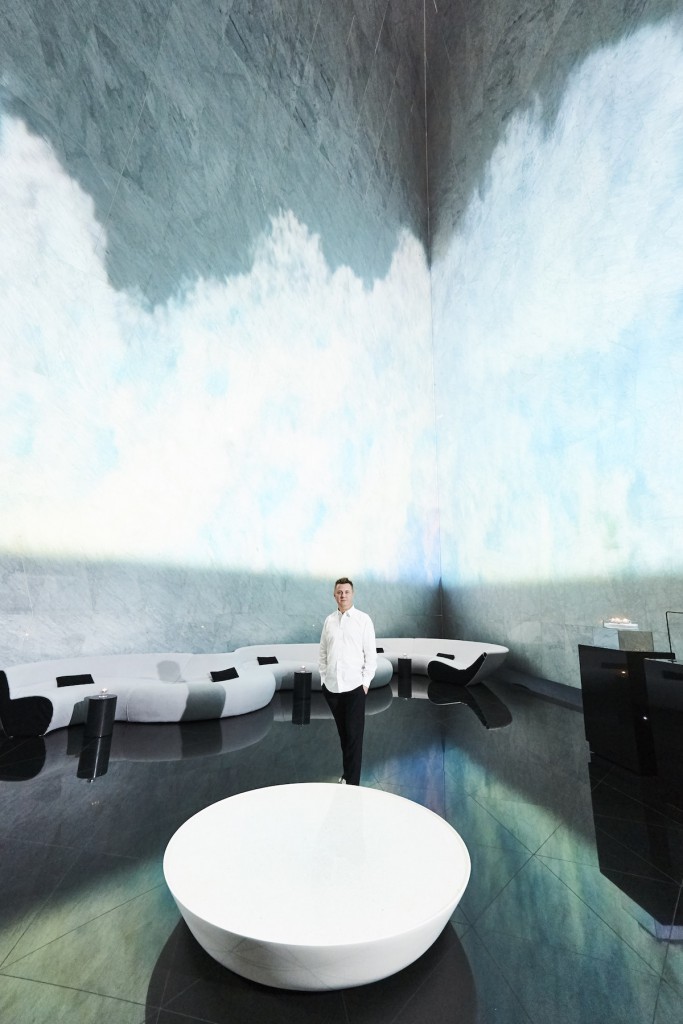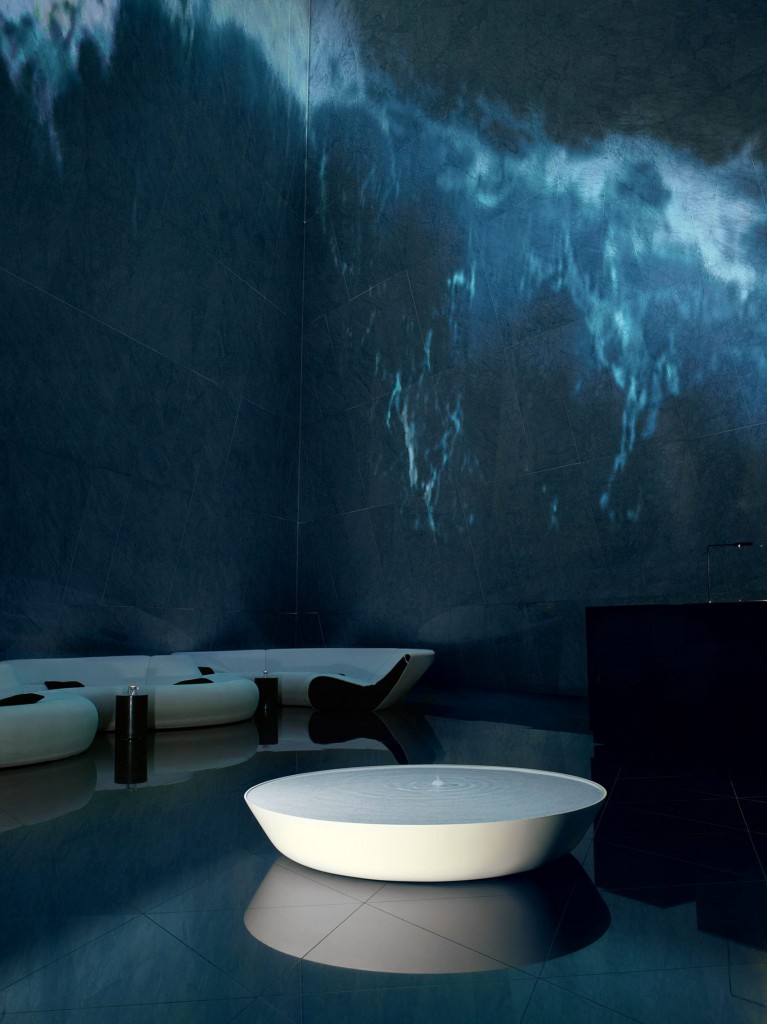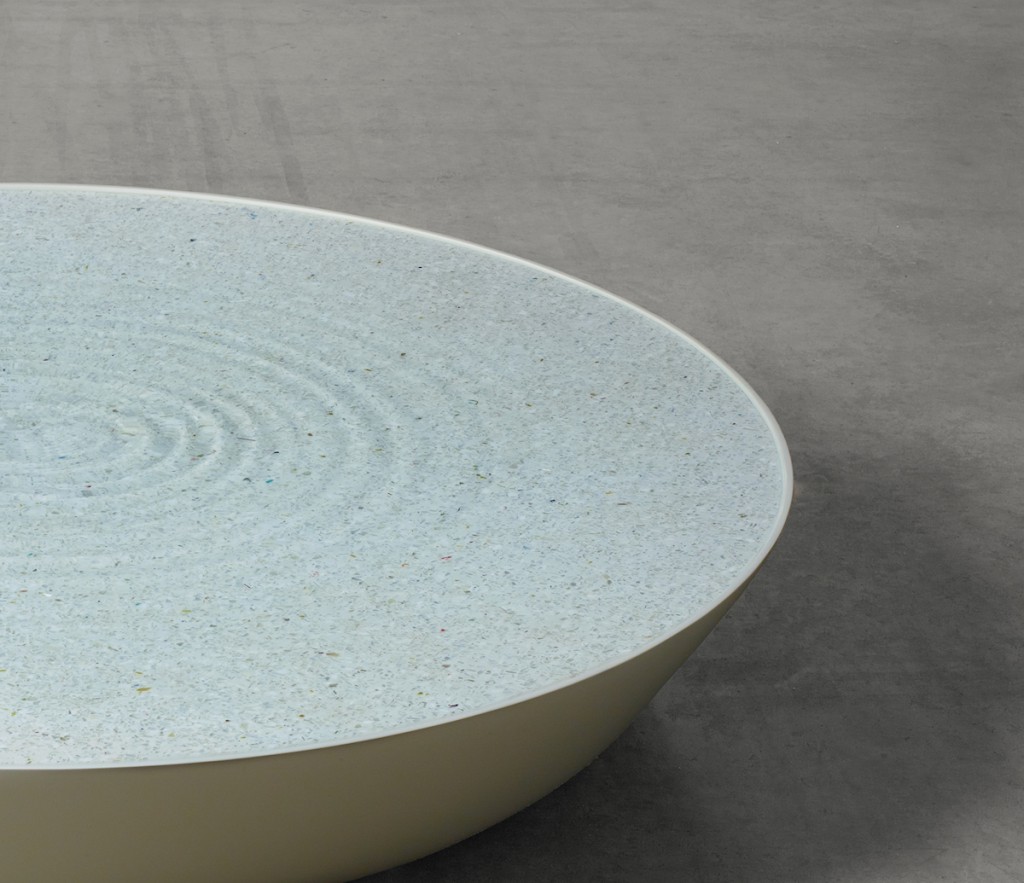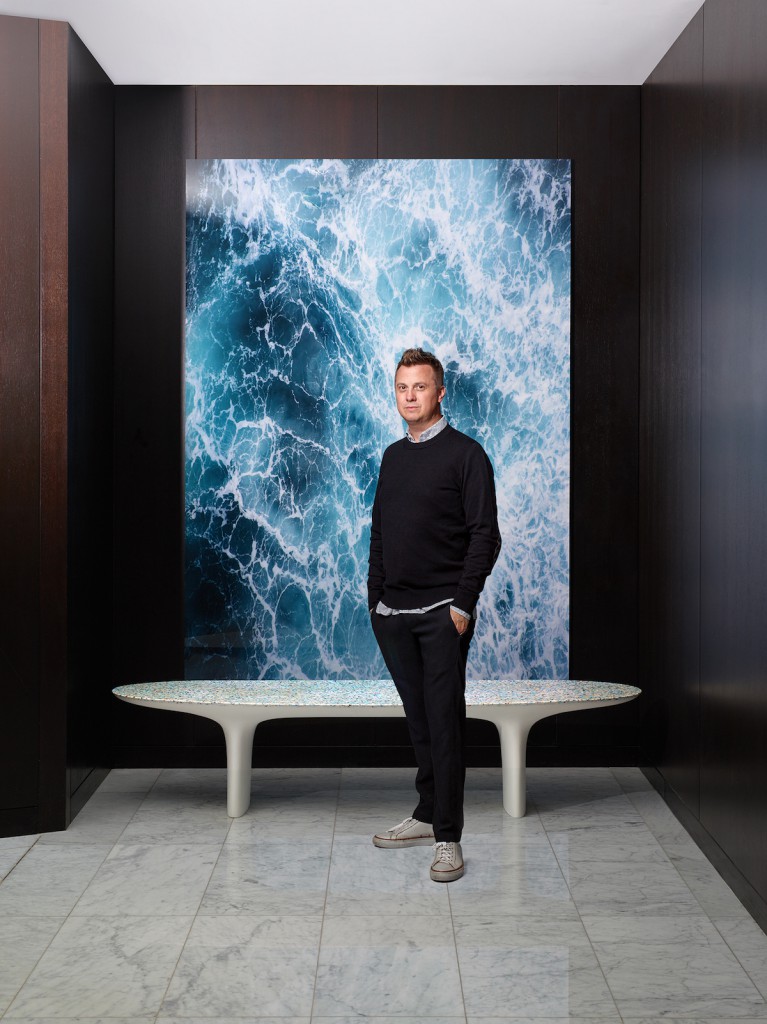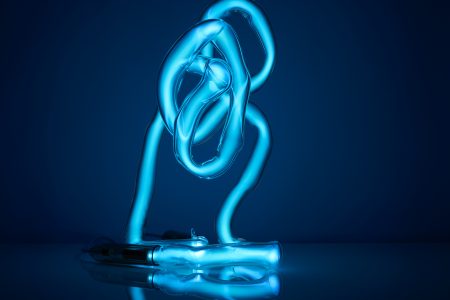Brodie Neill’s Drop in the Ocean
We spoke with Australian designer Brodie Neill about his recent installation at the ME London hotel, focused on the impact of human activity on ocean waste
Designer Brodie Neill confronted the issue of plastic waste in the oceans using a site-specific installation at The Atrium, in the ME London hotel, designed by Foster + Partners. Merging video mapping technology, architecture and design, visitors entered a multi-sensory journey: according to the Australian-born designer, “the installation unites the power of a single drop of water with the expansive height of the building in a visually melodic display of nature-driven technology through projection.”
The installation also marked the debut of Neill’s Flotsam series of furniture, produced from Ocean Terrazzo —a material developed for his Plastic Effects installation at the Australian Pavilion at the 2016 London Design Biennale. The material, in line with the exhibition, is made of reconstituted fragments of plastic washed up on shores around the globe.
“The installation is a continuation of my work, drawing attention to the global issue of ocean pollution through contemporary design, and up cycling waste streams to create innovative materials,” explained the designer. “Drop in the Ocean at ME London reflects on not only the power of a single drop of water, but the impact of the cumulative effect of every single person’s actions in the protections of our oceans and ocean life.”
We spoke with the Australian designer to discuss millennial attitudes, the architectural features that made his installation possible and objects that go beyond an aesthetic purpose.
TLmag: I read the other day that terrazzo is now the new millennial pink –that is, the new decorative obsession amongst the 20-34 crowd. And yet, you’ve turned that concept around with an environmental position. Why did you decide to use the terrazzo technique to convey this message?
Brodie Neill: The terrazzo appearance of Ocean Terrazzo is a true reflection of the array of colours of ocean plastic reclaimed from our coastlines, seas and waterways. The fact that it has a fashionable effect is only an advantage in drawing the viewer in to a much more sinister subject.
We invested in a significant amount of research and material testing, initially unsuccessfully experimenting with melting different types of microplastics together to create a material. When working with ocean plastic, it is impossible to know the age and chemical makeup of the plastic fragments, so by adapting to a traditional terrazzo technique, we were better able to bond the plastic pieces.
In a standard composite, the ratio of aggregate to new material is 30:70; however for us it was a key criterion to use as much of the plastic waste as possible, so Ocean Terrazzo is comprised of 70 percent aggregate and 30 percent new material. So the terrazzo technique moved beyond simply having an aesthetic purpose to also having a purpose.
The aim is to utilise as much of the ocean plastic as possible, finding it a purpose rather then leaving it to inflict further damage on the environment and eventually ourselves. With Ocean Terrazzo we have re-contextualised a waste material into something desirable, in the hope to shift people’s perceptions of plastic, recycling and care for the environment.
TLmag: The Atrium is, under its normal use, a champagne bar. How did its repurposing as an exhibition space happen? Which architectural features were you most interested in?
BN: The Atrium at ME London normally functions as a hotel check-in/check-out reception –the champagne bar just makes that process more enjoyable for the hotel’s guests! I was attracted to the space because of the unique height of The Atrium, the mapped video projectors that are in place there and the calm cathedral-like environment. I created a design installation that utilised each of these components to convey an important message.
TLmag: While the installation was praised for bringing a very urgent topic to light, it also faced criticism for not being critically sharpened enough. Do you agree with the latter?
BN: Drop in the Ocean was a multi-sensory installation set within a dramatic setting for the London Design Festival, not an information-led graphic exhibition. The aim was to intercept the day-to-day functions with a moment of contemplation with the hope to encourage a wave of change by each individual’s action.
Fortunately, it received recognition for raising awareness to the important issue of ocean plastic and I hope to realise the installation again somewhere else in the future.
TLmag: Are there any other environmentally impactful materials you’re interested in exploring in the near future?
BN: There is still much work to be done in addressing the issue of ocean plastic and environmental waste plastic in general. It is a complex problem with no one solution or cause, and in fact it is only going to get worse before it gets any better. This is a topic with which I have been concerned for some time; my Plastic Effects installation presented at the Australian Pavilion during the inaugural London Design Biennale also engaged with this subject. This is an issue I will continue to explore, and Ocean Terrazzo is a material I will continue to develop and seek new applications for it.
Working with recycled materials is something I have explored throughout my career. The Remix is created from a varied mix of reclaimed plastics and woods and I have created a number of items using recycled aluminium. My work is very much inspired by nature –an ethos instilled in me during my upbringing in Tasmania–, and honouring materials and reducing our impact on the environment as much as possible is part of this.
